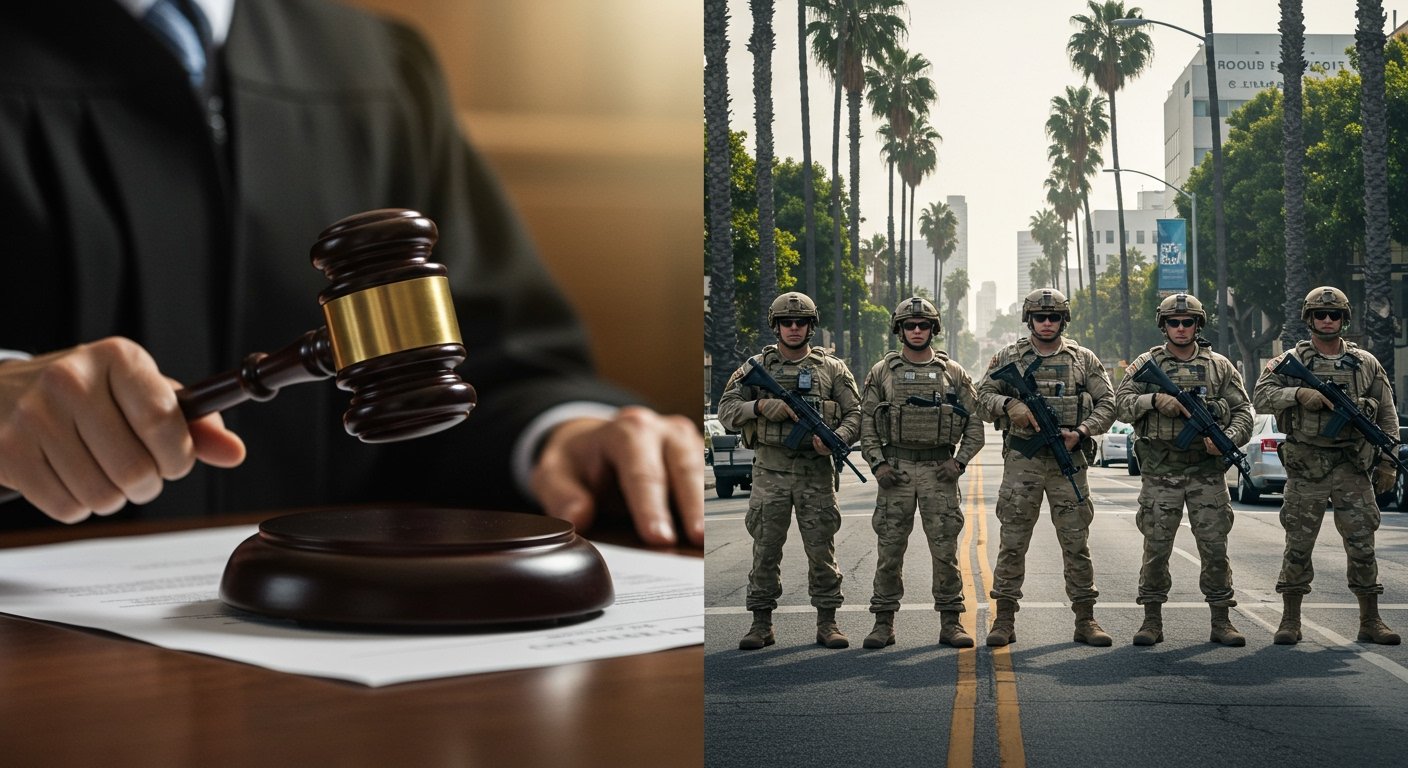Judge Rules for Transparency on LA Military Presence
A federal judge in San Francisco has issued a significant order requiring the Trump administration to provide detailed information regarding the deployment of military personnel in Los Angeles. The ruling, handed down late Thursday, June 26, 2025, by Senior U.S. District Judge Charles Breyer, mandates that the White House respond within two weeks to a request from California Governor Gavin Newsom for specifics on the operation and purpose of federal troops on the ground in the state’s largest city.
The order stems from a legal challenge initiated by Governor Newsom, who has sought clarity on the extent to which federal military assets, including Marines and National Guard personnel, have been utilized in Los Angeles. Specifically, the lawsuit questions whether these forces are actively engaged in policing operations on city streets or are confined to protecting federal property, as the administration has asserted.
Background to the Legal Confrontation
The judicial directive is the latest development in an escalating legal dispute between lawyers representing the Trump administration and those acting on behalf of Governor Newsom. This confrontation was sparked by the federal response to protests and unrest that erupted in Los Angeles earlier in June 2025.
The unrest followed a series of unannounced immigration raids in the area. Reports indicated that violent crowds reacted to these federal actions, leading to a heightened security presence. In response to the escalating situation, President Trump made the decision to federalize the National Guard and deploy additional military assets. Crucially, this federalization and deployment occurred without a formal request from Governor Newsom, who is the traditional authority figure over state National Guard forces when they are not federalized.
The federal deployment was substantial, involving approximately 4,000 members of the National Guard and 700 Marines. The scale and nature of this federal military presence within California’s borders, operating independently of state executive authority, became a point of contention for Governor Newsom.
Newsom’s Lawsuit and Specific Demands
Governor Newsom responded to the situation by filing a lawsuit on June 10, 2025. The core of his legal action was not necessarily to challenge the presence of federal troops outright but to demand transparency and accountability regarding their mission and rules of engagement within California. The lawsuit specifically sought detailed information to ascertain the precise roles being performed by the deployed military personnel.
Newsom’s legal team argued that the state and its citizens have a right to know whether federal troops are being used for traditional law enforcement roles among the civilian population on public streets, or if their activities are strictly limited to safeguarding federal buildings and installations, as maintained by the Trump administration.
This distinction is critical under U.S. law, which typically separates military roles from domestic law enforcement. The use of active-duty military personnel for domestic policing is sharply restricted by the Posse Comitatus Act, although the federalization of the National Guard operates under different legal frameworks, particularly when used for suppressing insurrection or enforcing federal law under specific circumstances.
The Judge’s Reasoning and Order
In his order issued late Thursday, June 26, 2025, Senior U.S. District Judge Charles Breyer agreed with Governor Newsom that the state is entitled to the requested information. Judge Breyer’s ruling underscored the importance of transparency regarding the deployment of federal military forces within a state’s jurisdiction, particularly when their mission and activities could potentially impact civilian life and civil liberties.
The judge found that the administration’s general claims that the troops were solely for protecting federal property were insufficient to dismiss Newsom’s request for specific details. The court’s decision implies that the nature of the deployment, involving thousands of troops including Marines, warrants a clear accounting of their operational scope.
The order gives the Trump administration exactly two weeks from the date of the ruling to comply with Newsom’s request for information. This deadline will require the administration to provide specific answers regarding the mission, location, and activities of the 4,000 National Guard members and 700 Marines deployed in Los Angeles.
Implications and Next Steps
Judge Breyer’s ruling represents a significant, albeit preliminary, victory for Governor Newsom in his push for transparency and a challenge to the federal government’s unilateral deployment of military assets within California without state executive consent. The decision reinforces the principle that states have a legitimate interest in understanding the scope of federal military operations occurring within their borders, especially during times of domestic unrest.
The Trump administration must now decide how to respond to the order within the two-week timeframe. They could comply fully, provide limited information while perhaps raising new legal arguments, or potentially appeal Judge Breyer’s decision. Failure to comply within the court-ordered period could lead to further legal action, potentially including sanctions or other judicial remedies.
The case highlights the ongoing tensions between federal and state authority, particularly concerning the use of military forces for domestic purposes. The outcome of the administration’s response and the subsequent legal proceedings will likely have implications for how federal military power is deployed in response to civil unrest in the future.
As of late Thursday, June 26, 2025, the Trump administration had not publicly commented on the court order. Governor Newsom’s office is expected to monitor the administration’s compliance closely as the two-week deadline approaches.





